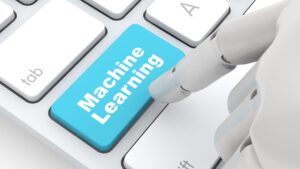Every year, Gartner identifies technology trends that are critical to business. The Gartner strategic technology trends for 2023 are built around three themes — optimize, scale and pioneer — where technologies can help organizations optimize resilience, operations or trust, scale vertical solutions and product delivery, and pioneer with new forms of engagement, accelerated responses or opportunity. Discover how these 10 key trends will drive strategic impact in 2023 and beyond.
“To enhance their organization’s financial position during times of economic turbulence, CIOs and IT executives must look beyond cost savings to new forms of operational excellence while continuing to accelerate digital transformation,” said Frances Karamouzis, Analyst at Gartner.
Sustainability
Sustainability traverses all of the strategic technology trends for 2023. In a recent Gartner survey, CEOs reported that environmental and social changes are now a top three priority for investors, after profit and revenue. This means that executives must invest more in innovative solutions that are designed to address ESG demand to meet sustainability goals. To do this, organizations need a new sustainable technology framework that increases the energy and material efficiency of IT services, enables enterprise sustainability through technologies like traceability, analytics, renewable energy and AI, and deploys IT solutions to help customers achieve their own sustainability goals.
Pioneer
Metaverse
Gartner defines a metaverse as a collective virtual 3D shared space, created by the convergence of virtually enhanced physical and digital reality. A metaverse is persistent, providing enhanced immersive experiences. Gartner expects that a complete metaverse will be device-independent and won’t be owned by a single vendor. It will have a virtual economy of itself, enabled by digital currencies and non-fungible tokens (NFTs). By 2027, Gartner predicts that over 40% of large organizations worldwide will use a combination of Web3, AR cloud and digital twins in metaverse-based projects aimed at increasing revenue.
Superapps
A superapp combines the features of an app, a platform and an ecosystem in one application. It not only has its own set of functionalities, but it also provides a platform for third parties to develop and publish their own mini-apps on. By 2027, Gartner predicts that more than 50% of the global population will be daily active users of multiple superapps.
Adaptive AI
Adaptive AI systems aim to continuously retrain models and learn within runtime and development environments based on new data to adapt quickly to changes in real-world circumstances that were not foreseen or available during initial development. They use real-time feedback to change their learning dynamically and adjust goals. This makes them suitable for operations where rapid changes in the external environment or changing enterprise goals require an optimized response.
Optimize
Digital Immune System
Seventy-six percent of teams responsible for digital products are now also responsible for revenue generation. CIOs are looking for new practices and approaches that their teams can adopt to deliver that high business value, along with mitigating risk and increasing customer satisfaction. A digital immune system provides such a roadmap.
Digital immunity combines data-driven insight into operations, automated and extreme testing, automated incident resolution, software engineering within IT operations and security in the application supply chain to increase the resilience and stability of systems. Gartner predicts that by 2025, organizations that invest in building digital immunity will reduce system downtime by up to 80% – and that translates directly into higher revenue.
Applied Observability
Observable data reflects the digitized artifacts, such as logs, traces, API calls, dwell time, downloads and file transfers, that appear when any stakeholder takes any kind of action. Applied observability feeds these observable artifacts back in a highly orchestrated and integrated approach to accelerate organizational decision-making.
Scale
Industry Cloud Platforms
By 2027, Gartner predicts that more than 50% of enterprises will use industry cloud platforms to accelerate their business initiatives. Industry cloud platforms offer a combination of SaaS, platform as a service (PaaS) and infrastructure as a service (IaaS) providing industry-specific sets of modular capabilities to support specific industry business use cases. Enterprises can use the packaged capabilities of industry cloud platforms as building blocks to compose unique and differentiating digital business initiatives, providing agility, innovation and reduced time to market, while avoiding lock-in.
Platform Engineering
Platform engineering is the discipline of building and operating self-service internal developer platforms for software delivery and life cycle management. The goal of platform engineering is to optimize the developer experience and accelerate product teams’ delivery of customer value.
Gartner predicts that 80% of software engineering organizations will establish platform teams by 2026 and that 75% of those will include developer self-service portals.













